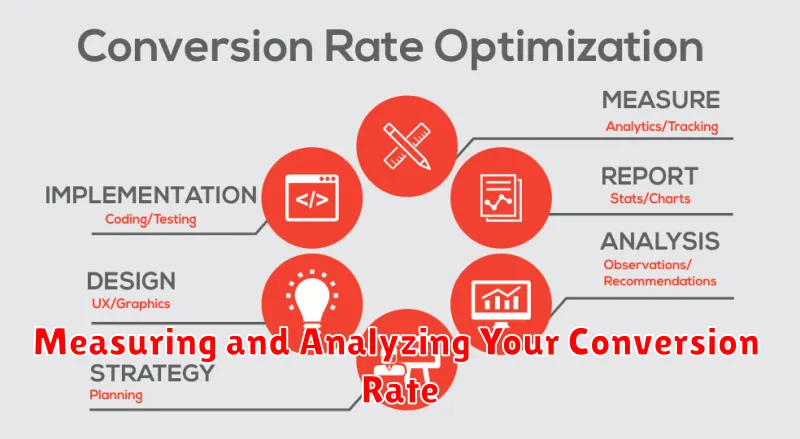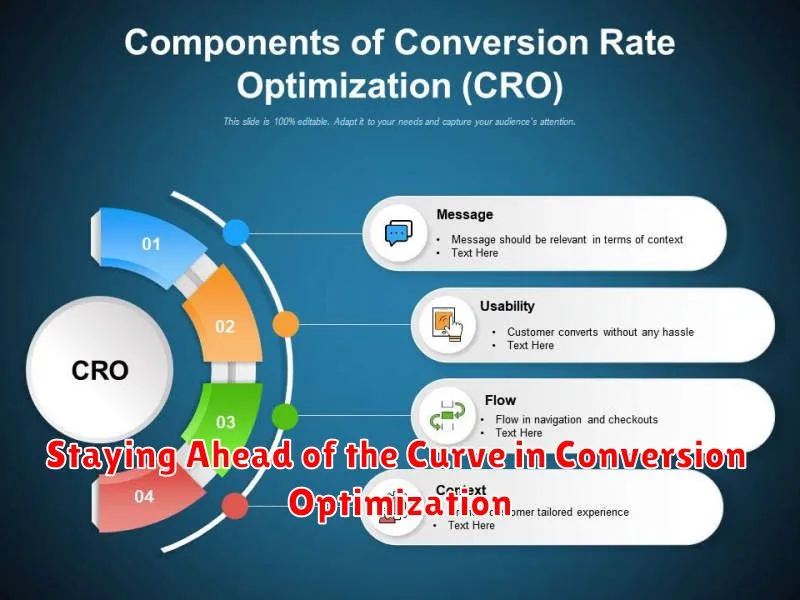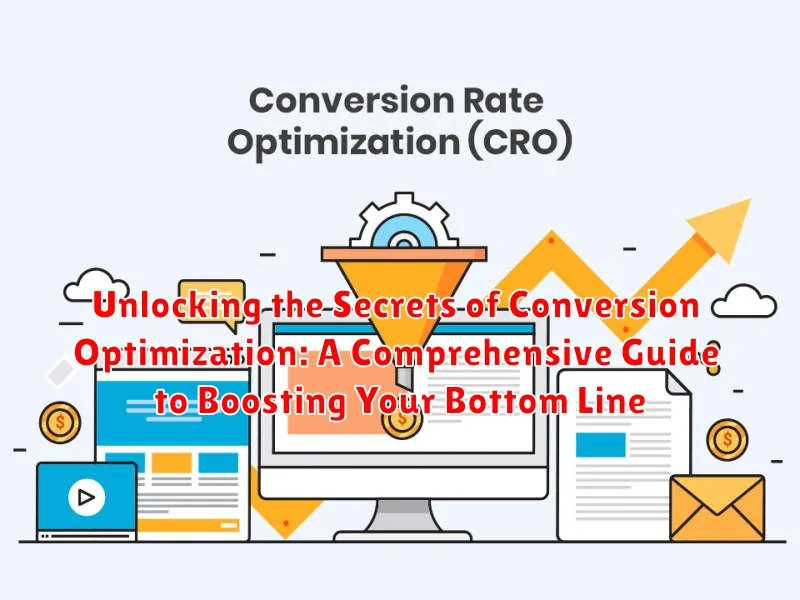In today’s competitive digital landscape, conversion optimization is no longer a luxury, but a necessity. For businesses aiming to thrive online, understanding the intricacies of converting website visitors into paying customers is paramount. This comprehensive guide delves deep into the world of conversion rate optimization (CRO), providing actionable strategies to boost your bottom line and achieve sustainable growth. Whether you’re an e-commerce giant, a budding startup, or a seasoned marketer, this guide will equip you with the knowledge and tools necessary to unlock the full potential of your online presence and maximize your return on investment (ROI).
This guide will explore the core principles of conversion optimization, covering everything from understanding user behavior and conducting thorough A/B testing to optimizing landing pages and streamlining the checkout process. We’ll unpack the secrets to creating a seamless user experience (UX) that drives conversions and fosters customer loyalty. By implementing the strategies outlined in this guide, you’ll be well on your way to transforming your website into a high-performing conversion machine, ultimately boosting your bottom line and achieving significant business success.
Understanding the Basics of Conversion Optimization
Conversion optimization is the process of increasing the percentage of website visitors who complete a desired action. This action, known as a conversion, can vary depending on your business goals. Examples include making a purchase, signing up for a newsletter, or filling out a contact form. Essentially, it’s about turning casual browsers into valuable customers.
The conversion rate is calculated by dividing the number of conversions by the total number of visitors, then multiplying by 100 to express it as a percentage. For example, if your website had 10,000 visitors and 200 of them made a purchase, your conversion rate would be 2%.
A higher conversion rate translates directly to a better return on investment (ROI). By optimizing your website for conversions, you’re making the most of your existing traffic, reducing wasted ad spend, and ultimately boosting your bottom line. This involves understanding user behavior, identifying friction points in the user journey, and implementing changes to improve the user experience and encourage conversions.
The Importance of Conversion Rate Optimization
Conversion Rate Optimization (CRO) is crucial for maximizing the return on your marketing investments. It focuses on improving the percentage of website visitors who complete a desired action, such as making a purchase, signing up for a newsletter, or filling out a contact form. Essentially, CRO transforms passive browsers into active customers.
Improved ROI is a key benefit. By optimizing your conversion rate, you can generate more revenue from the same amount of traffic, reducing your customer acquisition cost. This allows you to reinvest your marketing budget more strategically and efficiently.
Furthermore, CRO provides valuable insights into customer behavior. By analyzing how users interact with your website, you can identify areas for improvement in user experience and messaging, leading to a more intuitive and engaging online presence.
Ultimately, CRO is not just about increasing sales; it’s about building a stronger relationship with your audience by delivering a more relevant and valuable experience. This fosters customer loyalty and drives sustainable business growth.
Key Elements of a Successful Conversion Optimization Strategy
A well-structured conversion optimization strategy hinges on several key elements working in harmony. Clear Objectives are paramount. Define precisely what you want to achieve, whether it’s increased sales, lead generation, or sign-ups. These objectives must be measurable and time-bound for effective tracking and analysis.
Target Audience Analysis is crucial. Understanding your audience’s needs, motivations, and online behavior is fundamental to tailoring your website and messaging for optimal conversion. Create detailed user personas to guide your optimization efforts.
A/B Testing forms the backbone of any successful optimization strategy. Rigorous testing of different elements, such as headlines, call-to-actions, and page layouts, allows you to identify what resonates most effectively with your target audience. Data Analysis is essential to interpret the results of these tests and make informed decisions.
Finally, Continuous Improvement is vital. Conversion optimization is an ongoing process, not a one-time fix. Regularly monitor your metrics, adapt to changing user behavior, and continually refine your strategy for optimal performance.
Effective Conversion Optimization Tactics
Implementing the right tactics is crucial for driving conversions. Here are some proven methods to consider:
A/B Testing
A/B testing, also known as split testing, compares two versions of a webpage to determine which performs better. This allows for data-driven decisions on everything from headline copy to button colors.
Personalized Experiences
Tailoring the user experience based on individual behavior and preferences can significantly impact conversions. Consider implementing personalized recommendations, targeted messaging, and dynamic content.
Streamlined Checkout Process
A complicated or lengthy checkout process can lead to cart abandonment. Simplify the steps required to complete a purchase by minimizing form fields and offering guest checkout options.
Clear Call to Actions
Compelling call to actions (CTAs) guide users towards the desired conversion. Use action-oriented language and visually prominent buttons to encourage clicks.
Conversion Optimization Tools and Techniques
Leveraging the right tools and techniques is crucial for effective conversion rate optimization. A range of resources are available to help analyze user behavior, identify areas for improvement, and implement changes.
Analytics Platforms
Web analytics tools like Google Analytics are fundamental. They provide data on website traffic, user demographics, and conversion paths. This information is essential for identifying pain points and opportunities.
A/B Testing Software
A/B testing platforms allow you to experiment with different versions of web pages to determine which performs better. Testing elements like headlines, call-to-action buttons, and forms can yield significant improvements.
Heatmaps and Session Recording
Tools like heatmaps and session recordings provide visual representations of user interaction on your site. Heatmaps show where users click and scroll, while session recordings replay individual user sessions. These tools can reveal usability issues and areas of interest.
Form Analysis Tools
Form analysis helps optimize forms for better completion rates. These tools track how users interact with forms, identify fields causing friction, and suggest improvements to streamline the process.
Measuring and Analyzing Your Conversion Rate

Before embarking on any optimization efforts, you must establish a clear understanding of your current conversion rate. This involves accurately measuring and analyzing your existing performance to identify areas for improvement.
Begin by defining your key performance indicators (KPIs). What actions signify a conversion for your business? This could be a purchase, a form submission, a subscription, or any other desired action taken by a user.
Utilize website analytics tools to track these KPIs. Monitor the number of visitors, the number of conversions, and calculate your conversion rate by dividing the number of conversions by the number of visitors, expressed as a percentage. For example, if you had 1000 visitors and 50 conversions, your conversion rate would be 5%.
Segment your audience to analyze conversion rates across different demographics or traffic sources. This can reveal valuable insights into which groups are converting well and which require further attention. Track conversion rates over time to identify trends and patterns, which can help inform your optimization strategies.
Common Conversion Optimization Mistakes to Avoid
Several common pitfalls can hinder your conversion optimization efforts. Avoiding these mistakes is crucial for maximizing your results.
One frequent error is neglecting mobile optimization. With the majority of internet traffic coming from mobile devices, a poor mobile experience can drastically reduce conversions. Ensure your website is responsive and offers a seamless user experience across all devices.
Another mistake is lacking a clear call to action (CTA). Visitors need clear guidance on what action to take. Make your CTAs prominent, concise, and compelling.
Ignoring A/B testing is another significant oversight. Don’t rely on assumptions. A/B test different elements of your website, from headlines to button colors, to determine what resonates best with your target audience.
Finally, failing to analyze data can lead to ineffective strategies. Track key metrics, such as bounce rate and time on page, to understand user behavior and identify areas for improvement.
Best Practices for Conversion Optimization
Implementing best practices is crucial for successful conversion optimization. A/B testing is paramount. Rigorous testing allows you to compare variations of elements, like headlines or call-to-action buttons, to identify what resonates best with your audience.
Personalization is also key. Tailoring the user experience based on demographics, browsing history, or other data points can significantly improve conversion rates. Consider implementing personalized recommendations or targeted messaging.
Streamlining the user journey is essential. A seamless and intuitive experience, from landing page to checkout, reduces friction and encourages conversions. Minimize form fields, optimize page load speeds, and ensure mobile responsiveness.
Clear calls to action are vital. Use compelling language and visually prominent buttons to guide users towards the desired conversion. Make sure your CTAs are specific and easy to understand.
Staying Ahead of the Curve in Conversion Optimization

The digital landscape is in constant flux. To maintain a competitive edge in conversion optimization requires continuous learning and adaptation. Staying ahead of the curve means proactively embracing new technologies and strategies.
Artificial intelligence (AI) and machine learning are increasingly influential. These technologies can personalize user experiences, predict customer behavior, and automate optimization processes. Exploring and integrating these tools into your strategy is crucial for future success.
Another key area is the evolving landscape of data privacy. Regulations are constantly changing, impacting how businesses collect and utilize customer data. Staying informed and compliant is not just a legal necessity, it’s essential for maintaining user trust, which directly influences conversions.
Finally, remember the importance of experimentation. A/B testing and other data-driven approaches remain vital. Continuously testing new ideas, analyzing results, and refining your approach is the cornerstone of staying ahead in the ever-changing world of conversion optimization.

